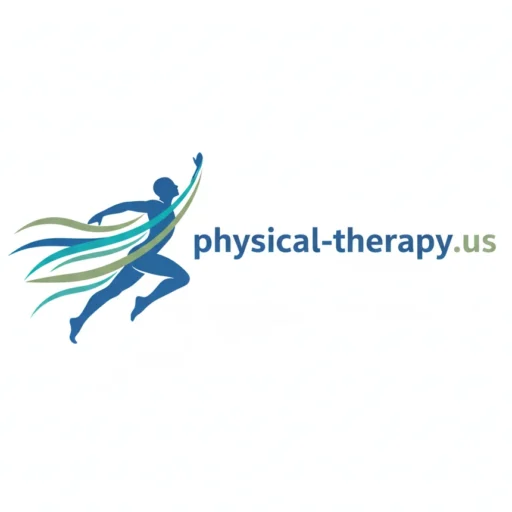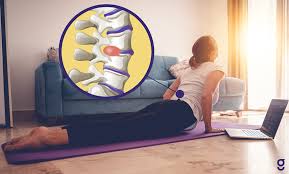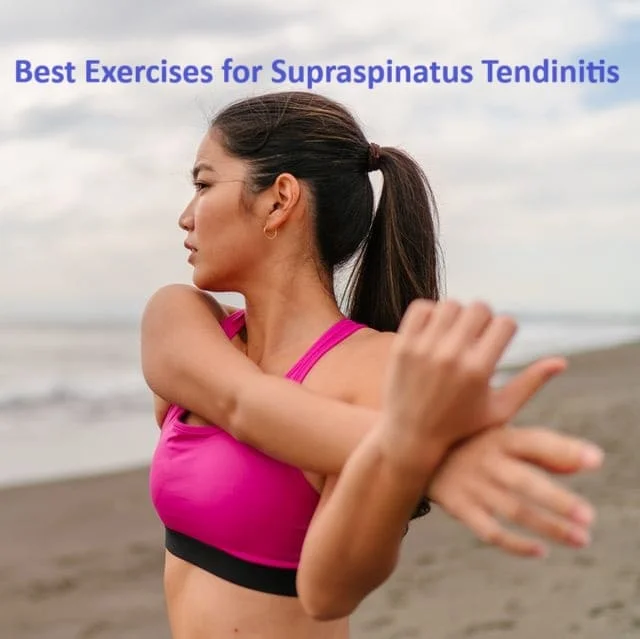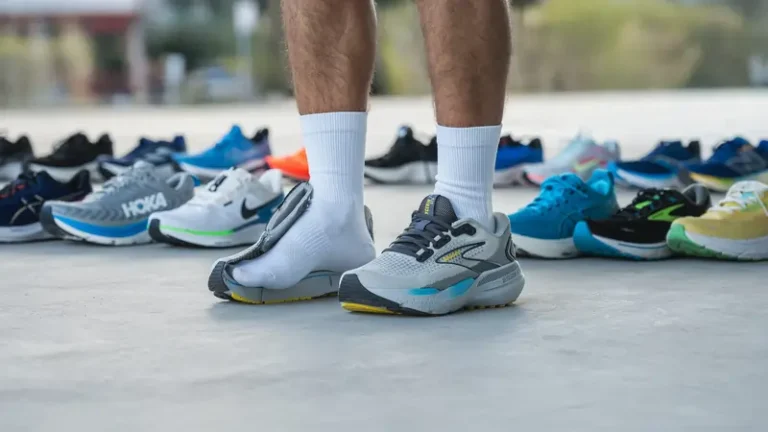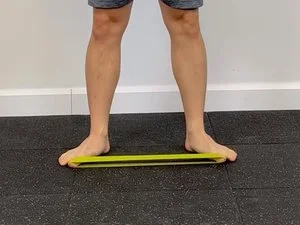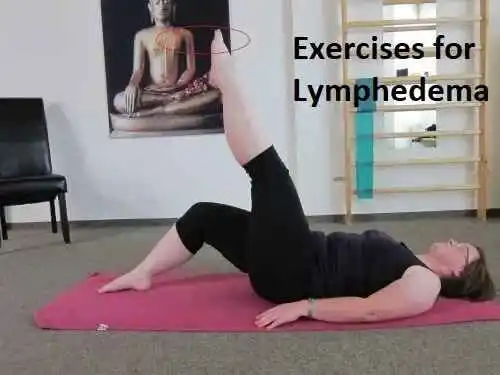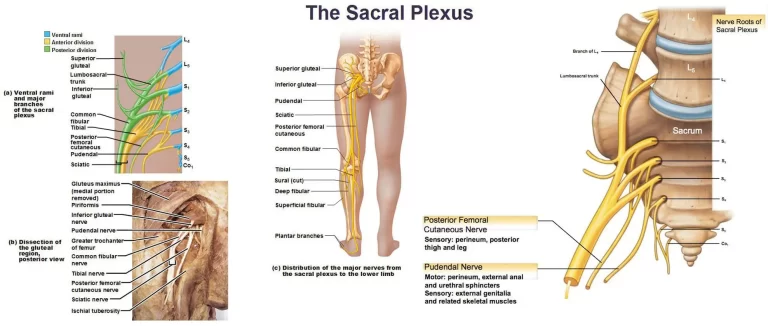7 Top Exercises to Heal Slipped Disc Naturally (L4-5, L5-S1)
Introduction:
Chronic back pain, limited motion, and pain during everyday activities can all be symptoms of a slipped disc. Even though medical care is vital, focused, mild workouts can be very helpful in reducing pain, enhancing spinal alignment, and encouraging the body’s natural healing process.
These seven well-crafted exercises are intended to help you heal safely and regain your mobility by strengthening your core, improving flexibility, and lowering pressure on the damaged discs.
Benefits of Exercises to Heal Slipped Disc Naturally:
There are several advantages to using these exercises to naturally cure a slipped disc. They enhance posture and spinal flexibility, strengthen the back and core muscles to better support the spine, and lessen back pain by releasing pressure on the spinal discs and surrounding nerves.
Frequent practice can also improve blood circulation, encourage quicker tissue repair, stop additional disc injuries, and increase general mobility, making it easier and more comfortable to carry out daily tasks.
7 Exercises to Heal Slipped Disc Naturally Video:
7 Exercises to Heal Slipped Disc Naturally:
Straight Leg Raises:
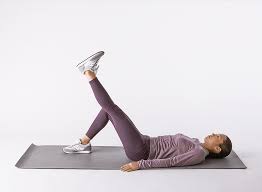
Straight leg raises are a great way to build your hip flexors and lower abdominal muscles without overtaxing your spine. This exercise helps stabilize the lower back and lessen strain on the slipped disc by maintaining the legs straight and raising them gradually while using the core.
Additionally, it improves blood flow to the lumbar area, which aids in the healing process, and strengthens the core, which is crucial for keeping good posture and avoiding disc issues in the future. Straight leg raises can greatly lessen pain, improve hip and lower back flexibility, and promote a safe recovery from a slipped disc when done regularly and correctly.
Knee-to-Chest Stretch:
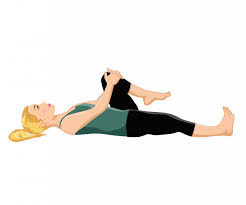
A wonderful exercise for releasing lower back strain and gently moving the spine is the knee-to-chest stretch. This stretch helps lengthen the lower back muscles, lessen compression on the spinal discs, and ease pain from a Herniated Disc by pulling one or both knees toward the chest while you’re resting on your back.
Additionally, it enhances circulation to the affected area, facilitates the relaxation of tense muscles that frequently cause pain, and increases hip and lumbar flexibility. Stretching from the knee to the chest regularly can improve mobility, assist spinal alignment, and have a calming impact that enhances other strengthening exercises during the healing process.
Bridging:
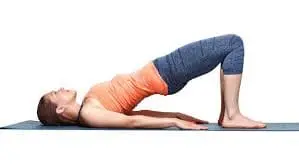
The glutes, lower back, and core muscles are all vital for stabilizing the spine and releasing pressure on a slipped disc, and bridging is an effective way to strengthen these areas. The posterior chain is activated, spinal stability is increased, and lumbar disc tension is lessened when you lie on your back with your knees bent and your hips raised toward the ceiling.
Additionally, this activity improves posture, increases hip mobility, and supports healthy pelvic and lower back alignment. Bridges can be performed regularly to reduce pain, stop additional damage, and provide a solid base that promotes natural healing and spinal health in general.
Cobra Pose:
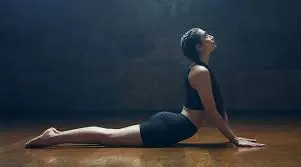
The Cobra Pose is a mild back extension exercise that increases spinal flexibility and strengthens the lower back muscles. This posture opens up the chest, releases strain on the spinal discs, and extends the abdominal muscles by reclining face down and raising the chest off the floor with your hands.
Additionally, it promotes healthy spinal alignment, enhances lumbar mobility, and improves posture—all of which are critical for recovering from a slipped disc. The Cobra Pose can improve general spine strength, ease stiffness, and ease pain when done properly and regularly. This will make daily motions less unpleasant.
Hip Extension:
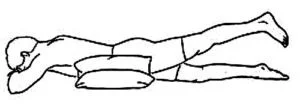
Strengthening the glutes, hamstrings, and lower back muscles—which support the spine and relieve pressure on a slipped disc—requires hip extension exercises. This movement engages the posterior chain, enhances hip stability, and encourages good pelvic and lower back alignment by extending the leg backward while maintaining core engagement.
In addition to improving general posture and functional movement in day-to-day tasks, strengthening these muscles also lessens pain and discomfort. A more solid and resilient spine can result from regular hip extension practice, which can promote natural healing, stop further injuries, and improve hip and lower back strength and flexibility.
Superman Pose:
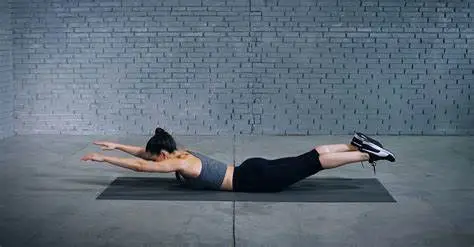
To support the spine and lessen the strain on a slipped disc, the Superman Pose is a great way to strengthen the entire posterior chain, which includes the shoulders, glutes, and lower back. This exercise strengthens the back and core muscles, encourages healthy spinal alignment, and improves general stability by having the person lie face down and simultaneously raise their arms, chest, and legs off the ground.
Additionally, it promotes blood flow to the injured areas, enhances spinal flexibility, and helps with posture, all of which contribute to the healing process. The Superman Pose can help with a safe and natural rehabilitation from a slipped disc by reducing lower back pain, increasing strength, and improving functional mobility when done regularly and correctly.
Bird Dog Exercise:
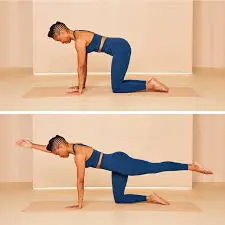
The Bird Dog exercise is a great way to strengthen your glutes, lower back, and core while also improving your balance and spinal stability. This exercise uses the deep stabilizing muscles of the back and abdomen to promote the healing from a slipped disc by stretching one arm forward and the opposing leg backward while maintaining a neutral spine.
Additionally, it strengthens posture, boosts hip and lower back flexibility, and improves coordination. Frequent use of the Bird Dog exercise is crucial to a natural spine healing regimen because it reduces pain, stops further injuries, and creates a solid, sturdy base for daily motions.
Conclusion:
The natural healing process of a slipped disc can be greatly aided by including these seven exercises in your regular regimen. You can lessen pain, increase flexibility, and promote healthy spinal alignment by combining mild stretches, core strengthening exercises, and spinal stabilization exercises.
Regular practice not only speeds up recovery but also improves general mobility, preventing further injuries and enabling you to carry out daily tasks more comfortably and easily. To get the best results safely, pay attention to form, pay attention to your body, and make small, steady improvements.
FAQs
What signs indicate an emergency herniated disc?
Loss of control over the bowels or bladder, acute weakness in both arms or legs, or sudden, intense pain accompanied by fever, chills, or difficulty urinating are all signs of a herniated disc that need to be treated right away. These symptoms, particularly loss of bladder and bowel function, could be markers of cauda equina syndrome, a dangerous illness that needs to be evaluated right away to avoid irreversible harm.
What is the most effective degenerative disc disease treatment at home?
Numerous at-home therapies, like as exercise, proper posture, over-the-counter drugs, temperature therapy, transcutaneous electrical nerve stimulation (TENS), and relaxation methods, might lessen pain and delay or stop the course of degenerative disc disease.
Is the disc bulging in L4 and L5 serious?
A bulging L4-L5 disc can be dangerous, particularly if it results in extreme leg pain, numbness, or paralysis, as these symptoms may be signs of nerve compression. An untreated bulge can result in more serious problems like spondylolisthesis or, in rare cases, a medical emergency called cauda equina syndrome, which calls for immediate surgical intervention. Despite this, the condition is common and frequently responds to conservative treatment like physical therapy and pain medication. It is dangerous and requires immediate medical attention if you have symptoms like foot drop or a loss of control over your bowels and bladder.
Is a bulging disc or a slipping disc worse?
A ruptured disk is more likely to produce pain than a bulging disk. Nerve roots are more likely to be irritated by the disk’s inner cartilage, which protrudes farther. Pushing on the nerve can irritate it, but more often than not, the herniation results in a painful inflammation of the nerve root.
How can I tell if my herniated disc is getting better?
Reduced pain, increased range of motion, and a decline in nerve-related symptoms like tingling and numbness are all indicators that a herniated disc is mending. A reduction in muscle spasms, improved sleep, and perhaps a brief worsening of back pain as leg pain subsides (centralization) are additional encouraging signs.
How does a slipped disc get worse?
Long durations of sitting, particularly in chairs that are not ergonomic, can put undue strain on the lower back and worsen a ruptured disc. Sitting with bad posture can worsen symptoms, whether you’re at a desk, driving, or lounging on the couch. Take regular breaks to stand and stretch, and choose a chair with lumbar support.
Which workouts in the gym are best avoided if you have a bulging L4-L5 disc?
Toe touches and forward bends are two exercises that put unnecessary strain on the lower back since they require bending forward from the waist. These motions may make the bulging disk worse and increase pain. Stretches that preserve the spine’s natural curve are preferable.
Can disc bulging be treated with Ayurveda?
By using therapies like Panchakarma, herbal medicines, and lifestyle changes, Ayurvedic treatment for disc bulge aims to strengthen the spine, improve circulation, and restore dosha balance.
Which vitamin is most effective for degenerative disc disease?
These supplements have a well-established reputation for promoting joint health and helping people with degenerative disc degeneration. While chondroitin helps maintain the water content of discs, encouraging cushioning and flexibility, glucosamine aids in cartilage regeneration.
Which sleeping posture is ideal for someone with a slipped disc?
To keep your spine in alignment, the recommended sleeping positions for someone with a slipped disc are on your side with a pillow between your knees or on your back with a pillow beneath your knees. By maintaining the spine’s natural, neutral curve, these positions lessen the strain on the damaged disc. Avoid lying on your stomach because this puts stress on your back and flattens the natural curve of your spine.
How quickly can a slipped disc be fixed?
Short-term rest (one to three days) combined with a mild, activity-based recovery that includes physiotherapy, pain management, and lifestyle changes is the quickest strategy to mend a slipped disc. Avoid extended bed rest, which can cause stiffness and muscle weakness. Important actions include using heat and ice to relieve pain, taking anti-inflammatory drugs as directed, if necessary, and progressively returning to activities while avoiding motions that worsen pain.
References:
- Can you heal a slipped disc naturally? 7 exercises and lifestyle changes that help. (n.d.-c). Your Website Name. https://www.germantenhospitals.com/blog/slipped-disc-pain-7-natural-ways-to-heal-at-home
- Barrell, A. (2024c, October 1). Safe exercises for a herniated disk. https://www.medicalnewstoday.com/articles/324311
- McQuilkie, S., DC. (2023d, July 3). 7 Herniated disc exercises for the lower back (Lumbar area). PostureFlow (Formerly Back Intelligence). https://backintelligence.com/herniated-disc-exercises/
- HealthPartners. (2025b, April 18). Treating a herniated disc naturally: 7 ways to heal and recover with self-care. HealthPartners Blog. https://www.healthpartners.com/blog/treat-herniated-disc-naturally/
- Herniated disk (Slipped or bulging disk). (2025b, September 4). Cleveland Clinic. https://my.clevelandclinic.org/health/diseases/12768-herniated-disk
- Best exercises for a herniated disc: 9 safe moves to strengthen and heal your spine. (n.d.-b). https://www.bswhealth.com/blog/best-exercises-for-herniated-disc
